✅ Please Subscribe To The Channel and Join Us In Our Journey To 30k subs
https://www.youtube.com/@ESNGOLF?sub_confirmation=1
20 Most Controversial Disqualifications in Golf History
Watch next –
00:00 Mishap
01:19 Jordan
02:43 Disrespectful Act
04:17 Strange Rules Violation
05:21 Disappearance
06:32 Caddie Issues
07:43 Serious Misconduct
09:02 1 million USD
10:18 Classic Daly
11:50 Hideki
13:16 Rory
14:27 LPGA
16:00 Good to be true
17:23 Wrong time
18:34 Cheating
19:55 Serious?
21:02 DQ
22:22 Too Good?
23:46 Prodigy
25:17 Forbidden
26:32 Shocking news
Contact Us –
Business inquiries: esngolfbusiness@gmail.com
Copyright issues? Reach out at esngolfbusiness@gmail.com
Copyright Disclaimers –
Our content is used in adherence to YouTube’s Fair Use guidelines. This may include copyrighted video clips and images used under U.S. Copyright Act Section 107 for commentary, news reporting, educational purposes, and more, without specific authorization from copyright holders.
#lpga #golf #pga
From pro players disrespecting the course right in the middle of a tournament to embarrassingly outdated rules that actually got golfers banned. These are the most unbelievable disqualifications in golf history. And first we start with this one. And trust me, this hurts in the weirdest way possible because how do you go from the round of your life to getting disqualified by a hot dog? Nick Barrett wasn’t some tour regular. He wasn’t flying in on a private jet. He was a 31-year-old UPS driver from Maryland. just a regular guy chasing a not so regular dream. He’d already done the unthinkable by making it through local qualifying with a spotless 68. And now here he was at the final stage of US Open qualifying, holding his own with a solid 73 in the first round at Woodmont Country Club. Oakmont was just around the corner and then came lunch. Nick grabbed a quick hot dog after the round, stood up, and suddenly realized something was off. He patted his back pocket and panic set in. His scorecard was still there, unsigned, unsubmitted. He raced back to the scoring area, but it was too late. The rules don’t bend for good intentions. If you don’t sign your card, you don’t have a score. Disqualified. One of the most brutal disqualifications you’ll ever hear. And a reminder that in golf, the hardest hits don’t always come from your swing. Next up, could you imagine doing something so small, so dumb that it actually ends your tournament, but also changes the rules of golf forever? That’s exactly what happened to Jordan Speed at the Genesis Invitational. Now, Spath wasn’t having his best day. He shot a two over 73 in the second round at Riviera, wasn’t feeling great, and apparently made a beline for the bathroom right after signing his card. But in the middle of all that chaos, he made one simple mistake. On the fourth hole, he’d actually made a four. But the scorecard he signed, it said three. Just one wrong digit. That’s all it took. And in the PGA Tours rule book, that’s a death sentence. Sign for a lower score than you actually made. Boom. Automatic disqualification. No warnings, no doovers. Just pack your bags and go home. But here’s where it gets interesting. This wasn’t just SP’s personal nightmare. That scorecard rule, yeah, it’s been a pain in the ass for years. Players hated it. Fans hated it. Everyone knew it was harsh, outdated, and honestly, kind of ridiculous in the modern game. So, what did they do? The PGA Tour actually changed this shitty rule. SPath’s mistake was the straw that broke the camel’s back. But luckily, players now get a 15-minute grace period to correct scoring mistakes, even if they’ve already left the scoring area. Which brings us to one of the most bizarre and flatout disrespectful moments the Masters has ever seen. And somehow it didn’t end in a disqualification. Jose Blester, a 21-year-old rookie making his Masters debut, had a golden opportunity to announce himself to the golfing world. But instead of turning heads with his swing, he made headlines for something way more personal. It all started with a hat. Literally. Ballister showed up wearing an upside down Sun Devil’s cap, a quirky nod to his college days at Arizona State. Some fans found it funny. Augusta, not so much, but hey, it was harmless at first. Then came the moment that sent the online golf world into full meltdown. Mid round, hole 13, Ray Creek. Ballister needed a bathroom, but instead of heading to the nearest portaotti, the guy reportedly whipped it out and relieved himself right into Ray’s Creek, Augusta’s sacred water hazard. The same creek where legends have won and lost the green jacket. The reaction, instant fury. Fans online demanded a DQ on the spot. Some called it disgraceful, others disgusting. And one fan pretty much summed it up. Not only did he wear that atrocious hat, he pulled his hog out in front of the patrons, ban him for life. Ballister tried to brush it off, saying he completely forgot there were restrooms nearby and joked that it got one of the few claps he received that day, but the damage was done. The internet had already dubbed it Ballister’s dream. Next up, something happened on the 17th hole that seemed harmless. Barely noticeable, really. Just a quick hand gesture, but what it meant. That’s where things unraveled fast. During the first round of the Memorial Health Championship, Cole Hammer glanced over and saw Nelson Ledma’s caddy flash four fingers. A quiet signal that his player had hit a four iron. Hammer gave a nod and flashed his own club in return like a quick, “Yep, same here.” That’s it. No words, no drama. But the next day, everything changed. Hammer couldn’t shake the feeling that something about that moment crossed a line. He brought it up to officials just to be safe. And once the Cornferry tour reviewed it, they made their decision. That brief exchange had violated rule 10.2A, which strictly bans players or caddies from giving or receiving advice during a round. By the sixth hole of round two, officials stepped in, and the result was immediate. Both players were disqualified. Golf. The only sport where flashing four fingers can cost you your entire weekend. Up next, something absolutely strange happened during the final qualifier for the 2025 Open Championship. One moment, the field was set at 72 players. The next, it was down to 71, and no one knew why. Everything was unfolding at West Lancaster Golf Club, where a stacked group of hopefuls, many of them live pros, were battling for just five spots at Royal Portrush. Among them was Sam Horsefield, a 28-year-old Englishman with three DP World Tour wins and a live golf contract in his pocket. But while others were trying to go low, Horsefield was sinking fast. After a disastrous 7 over 43 on the front nine, something clearly snapped. And then he vanished. No official notice, no message to the marshals, no word to playing partners. He just walked off the course mid round without telling a single soul. That silent exit triggered an automatic disqualification from the RNA, an abrupt and baffling end to his attempt at qualifying. Horsesfield later tried to explain the situation on Instagram, but the damage was done. Because when the pressure’s on, disappearing without a word probably isn’t the best game plan. Next up, how do you get disqualified from a major without even breaking a rule yourself? Well, just ask Anna Pallayia’s Trevino because her week at the AIG Women’s Open ended thanks to something her caddy did. Now, Pallayia’s Trevino was doing just fine out there at St. Andrews, right on track to make the cut and stay in the hunt. But then on the 10th hole, her caddy pulled out a distance measuring device, a rangefinder, and at most LPGA events, that’s totally allowed. But not here. This is the AIG Women’s Open and at this major, DMDs are strictly banned. That first offense cost her two penalty strokes. Painful but survivable. But then he did it again on the 18th hole. That second violation, automatic disqualification. Anna didn’t even get a say in it. Her Catty’s mistake sealed her fate. And just like that, she was out of the tournament. What made it even more brutal is the confusion. Rangefinders have been legal at the women’s PGA Championship since 2021, and they’re fine at most LPGA stops, but this one event, different rule book. And unfortunately, her team didn’t get the memo. And now we’re at this next one. And trust me, this one stings a little more when you realize it happened in front of the home crowd. Amelio Gonzalez, a rising Mexican pro, had a golden opportunity to make a statement at his country’s own worldwide technology championship. But instead of making headlines for his golf, he was booted from the tournament for what the PGA Tour called serious misconduct. So what happened? It all went down on the 15th hole. Gonzalez hit his T-shot into the desert, then played a provisional just in case. His group found a ball within the 3minut search window. So far so good. But here’s where it went sideways. Instead of taking a proper look to confirm if it was his original ball, he just played the provisional and moved on. That little shortcut, yeah, that’s a big no no in the rule book. After a review, officials ruled that he hadn’t made a reasonable effort to identify the ball. And that was enough to slap him with an immediate DQ. Not just a regular one, either. A serious misconduct disqualification. It’s one of the harsher rulings you’ll see on tour, especially when no one’s accusing you of cheating, just being a little careless. In the end, Gonzalez’s mistake wasn’t just about a ball in the desert. It was a brutal reminder that in pro golf, cutting corners even slightly can get you cut from the tournament entirely. And here we are with a band that didn’t come from a broken rule or an encourse meltdown, but from a battle much bigger than that. The war between live golf and the rest of the golf world and caught right in the middle. Sergio Garcia. The 2017 Masters champion shocked fans in 2022 when he jumped ship and joined live golf. The paycheck massive. the consequences even bigger. By making the move, Garcia violated his DP World Tour membership obligations, something the tour didn’t take lightly. He refused to pay the fines, missed mandatory events, and basically burned every bridge on his way out. The result, he was banned from competing in DP World Tour events, and declared ineligible for the Riter Cup. But in 2024, the script flipped. Garcia reapplied for membership and came crawling back with a check. He paid over $1 million in fines and fees just to get reinstated. And even then, he’ll still have to serve out suspensions before he’s allowed to tee it up again in 2025. Now he’s chasing a shot at his 11th Ryder Cup appearance. But make no mistake, he’s not walking back in. He’s got to earn it. And after getting banned and fined like that, let’s just say that Rder Cup locker room might feel a little colder than usual. Coming in at number 13, we’ve got a moment that is one of the most infamous suspensions in golf history. A moment when the PGA Tour had to draw the line with one of its most unpredictable stars. In November 1993, during the second round of the Capalua International in Hawaii, John Daly was having a rough day. After starting the round at evenpar, he encountered difficulties, including three double bogeies. On the 11th hole, following a missed birdie putt, Daly picked up his ball and failed to complete the hole. He then proceeded to tee off on the 12th hole, an action that led to his immediate disqualification from the tournament. But the consequences didn’t stop there. PGA Tour Commissioner Dean Bean had seen enough. He handed Daly a full suspension from all tour related events for the rest of the year and left the door open for 1994. Even more, Daly was ordered to seek professional counseling because at that point, this wasn’t just about breaking rules. It was about a player clearly losing control. And this wasn’t Dy’s first meltdown that year. At the Keer Open, he got disqualified for throwing his scorecard into the scoring tent after a brutal final round. Then at the Southern Open in October, he walked off mid round without informing his playing partners. As Beaman stated, Jon now knows emphatically he can’t quit. You can’t go out there and walk off the golf course. And just like that, Daly wasn’t just penalized, he was banned. A rough year for a guy with a rough edge, and golf’s rule book finally caught up to him. Sliding in at number 12. You don’t usually expect a Mast’s champion to get banned in the middle of a tournament, especially not for something so bizarre and unexpected as this one. The round had barely started when officials pulled Matsuyama aside. The issue, his three wood, specifically a suspicious white substance on the club face. It looked like a bit of correction fluid, something harmless, but in the eyes of the rules, it was a problem. Turns out that white paint was applied for alignment purposes by his own equipment rep, no less. But there was too much of it. According to the PGA Tour’s chief referee, the club face had become nonconforming, meaning it could potentially affect ball performance. That’s a violation of rule 4.103. No warning, no slap on the wrist. If you use a non-conforming club during play, even once, you’re out. And just like that, Matsuyama was disqualified. One of the cleanest players on tour, banned from a tournament over a club that probably gave him zero advantage. The irony, he only hit one shot with it, his opening t-shot. Officials said the call was clear, but for fans, it felt like golf’s version of getting a red card for wearing the wrong shoelaces. Hideki didn’t argue. He took the DQ with class, but still banned for a bit of white paint. That might go down as one of the most polite scandals in golf history. At number 11, we’ve got a ban so ridiculous you’d think it came from a parody rule book, but no, it was real. And it knocked Rory Sabatini out of the tournament, faster than a shank off the tea. It’s the opening round of the 2021 RSM Classic. Sabatini is rolling. Five birdies in his last six holes, sitting at four under, looking sharp. But as he wraps up his round, someone notices something on his club. Not a performance enhancer, not a tech device, just a tiny reflective sticker. That’s right, a sticker. It’s the kind players use during practice to track club head speed with launch monitors. Totally harmless unless you forget to take it off. And Rory did. He used that fairway wood in competition. And that made the club non-conforming under rule 4.1. The punishment, not a slap on the wrist, not a warning. He was banned from the tournament instantly. His entire round was wiped out. His score erased all because of a tiny sticker that no one even noticed until after he’d finished playing. Sabatini owned it. He reported it himself. But let’s be honest, he didn’t get beat by the course. He got beat by Adhesive. For number 10, we’re at one of the most emotional, divisive, and headline grabbing bands in modern golf. Haley Davidson wasn’t just another name trying to make it on tour. She was on the verge of making history. In 2023, she was climbing through Q school, carding impressive rounds and inching closer to becoming the first transgender woman to earn full LPGA Tour status. It was a story bigger than scorecards, one that had the golf world watching every swing. But then the rule book changed. In early 2024, the LPGA, USGAA, and RNA introduced a major update. Starting in 2025, players must either be female at birth or have completed their transition before the onset of male puberty to be eligible for women’s competition. No exceptions, no gray area. And with that change, Haley Davidson was effectively banned. But here comes the crazy part of it all. The decision wasn’t made quietly. It came after growing pressure from inside and outside the sport. Former LPGA pro Amy Olsen went public with her frustration, writing on social media, “These women have worked too hard and too long to have to stand by and watch a man compete for and take their spot.” Golfer Olivia Schmidt, who had actually competed against Davidson, posted a video titled Tea Time: Keep Women’s Golf Female, where she voiced her concerns and pushed for immediate policy changes to protect what she called the integrity of the women’s game. Turns out breaking barriers is fine, just not the ones in the LPGA rule book. Next up, number nine. Some players get banned for losing their temper, others for cheating the system. But Nasa Hatka, she got banned for a miracle that turned out to be too good to be true. It’s the opening round of the 2024 Shopright LPGA Classic. Hatayoka is on a tear, six under, tied for third, and playing some of her best golf season. Then comes the ninth hole, her final of the day. She goes for the green and two and sends the ball deep into the fescue. Thick, wild, unplayable stuff. What followed looked like a miracle. A group of people, including a cameraman, scrambled into the rough, desperately trying to locate the ball. After a frantic search, they found it. Hatoka took an unplayable saved par, signed for a 65, and walked off with a smile. But the next day, her name was gone. Here’s what really happened. The search had taken longer than the 3minut limit allowed by rule 18.2A. That meant the ball was considered lost. By rule, she should have gone back and replayed the shot. Instead, she played from the wrong spot. And because she didn’t correct it before leaving the scoring area, she was disqualified under rule 14.7. No warning, no penalty strokes, just banned from the tournament. A brilliant round erased over a few extra seconds. In golf, it doesn’t matter how good you are. If the clock runs out, so do you. And now we get to this number eight. Every golfer has made a mistake on the course, but at the 2024 Corales Puntaana Championship, Ben Crane made one that got him banned. And the worst part, he didn’t even know it at the time. Crane had just birdied the seventh hole. Things were looking solid. He was finding rhythm, looking sharp, doing what a fivetime PGA Tour winner is supposed to do. But then came the eighth and a moment that turned his entire round inside out. He hit the wrong ball. Simple as that. Walked up to it, gave it a rip, kept moving. Problem is, it wasn’t his. It belonged to his playing partner, David Lipsky. And instead of fixing the mistake right then and there, Crane made it worse. He went to the ninth T and hit his next shot. That was it. Instant disqualification. Game over. No warning, no redo, just done. It was a shocking exit, especially for a guy who’s been around forever. And while Cranes had his name in headlines before, usually for playing slower than traffic on a Monday morning, this one, it was a full-on mental blunder caught in real time. He didn’t throw a club. He didn’t argue. He just hit the wrong ball and got himself banned for it. Which brings us to number seven. Before he was a major champion, before he became world number one. Before the Millions, the Green Jackets, and the Hall of Fame, there was just a young VJ Singh grinding it out on the Asian tour, chasing a dream. But then everything changed. His entire career was hanging by a thread, caught in a scandal so shocking it would nearly end his journey before it even began. VJ got banned. This wasn’t a slow fade out or a quiet suspension. It was a career-threatening hammer drop that stopped him in his tracks. The accusation, one of golf’s deadliest sins, scorecard tampering. Singh was battling to make the cut, and the pressure was on. According to tournament officials, he marked his score as one under par when he had actually shot one over. A twoshot swing. A difference between cashing a check or packing your bags. Singh denied it. Said he didn’t cheat. But the Asian tour wasn’t convinced. No appeal, no second chance, just a flatout ban. In the blink of an eye, VJ Singh went from chasing his dream to being shut out of the very tour he was trying to build a career on. And the craziest part, even after racking up over $70 million in earnings and becoming one of the greatest golfers of his era, this one moment from the 80s kept following him around like a bunker you just can’t escape. Now, number six. Most bands in golf come from outbursts, controversies, or off-c course scandals. But in this case, it started with a small, almost unnoticeable gesture. Something that slipped past everyone on the course except the cameras. In October 2013, during the BMW Masters in Shanghai, Simon Dyson was lining up a putt when he casually used his ball to press something down right in his putting line. No one on the course noticed, not the players, not the officials. But later that day, phone calls started coming in. Viewers watching the broadcast had spotted the move and reported it. At the time, repairing anything on the line of a putt, especially a spike mark, was against the rules. Dyson was given a two-shot penalty. But then things got worse. He submitted his scorecard without including the penalty, which led to an automatic disqualification for signing an incorrect card. The European tour didn’t leave it there. They launched a full disciplinary investigation and ruled that Dyson had committed a serious breach of conduct. He was fined £30,000 and handed a suspended two-month ban. At number five, we’ve got a moment so brutal, so absurd, it barely sounds real. A player dominating the field, five strokes clear of the competition and then getting banned before he could even tee it up on Sunday. The year was 2000. Patrick Harrington was on fire at the Benson and Hedges International Open. After three rounds, he wasn’t just in the mix. He was leading by five strokes. He was steamrolling the field heading into Sunday with a win practically in his pocket and then gone. Not a blown lead, not a final round collapse, not even a rules dispute on the course. Nope. He got disqualified over a missing signature. Yes, seriously. Turns out after the first round, Harrington had turned in a scorecard with two signatures, but neither of them were his. Somewhere in the post round routine, something slipped. And by the time tournament staff retrieved the scorecards to put them on display, they spotted the issue. His name wasn’t on it. According to rule 6-6B, that’s an automatic disqualification. Padre didn’t argue. He took full responsibility. But that didn’t make it sting any less. He was literally banned from finishing a tournament he was dominating because of a clerical error from 3 days earlier. In golf, you can eagle five holes and hit every fairway. But forget your own autograph. That’s game over. Coming in at number four. Now, this one sounds like a joke, but it’s not. Back in 1949, one of the most dominant golfers on the planet suddenly vanished from the PGA Tour. No suspension, no cheating scandal, just gone. The name Bobby Lock, a South African legend who rolled into America and made himself right at home by absolutely destroying the competition. He won 11 of his first 59 starts and finished in the top three more than half the time. Fans loved him. the leaderboard, not so much. And then without warning, Lock was banned. The official reason, he didn’t show up for a few tournaments and exhibitions he had committed to events like the Western Open and the Inesse Forball. Fair enough. If you ignore the part where other players had skipped events without being exiled from the tour, but here’s where it gets shady. Behind the scenes, whispers started flying. Players were frustrated. Lockach was too good, too consistent, too unbeatable. Even 1948 Mast’s champ Claude Harmon said it outright. Lockach was simply too good. They had to ban him. That’s right. This might be the only case in golf history where winning too much got you kicked out. The ban was lifted 2 years later in 1951. But Lockach never came back. He stayed in Europe and South Africa, racked up even more wins, and let the PGA Tour deal with its bruised ego. All right, on to the next one. Here we’re looking at an unbelievable moment that stunned the golf world. A teenage phenom center stage at her first pro event only to be suddenly banned before she could collect a single dollar. It was 2005 at the Samsung World Championship, and Michelle, just 16 years old, was making headlines as a phenom ready to take over the golf world. But what should have been a historic moment quickly spiraled into a nightmare. It all happened on the seventh hole in the third round. Michelle’s ball landed in a bush, forcing her to take an unplayable drop. She made a solid recovery, chipping to 15 ft and saving par. Everything seemed fine until Sports Illustrated’s Michael Bamberger noticed something strange. He didn’t say anything immediately. Instead, after the round, he measured the drop distance himself and later questioned Michelle about it. When she explained her triangle thing for ensuring she wasn’t closer to the hole, Bamberger grew more suspicious. The next day, after Michelle had finished tied for fourth and was set to cash her first pro paycheck of $53,000, LPGA officials stepped in. After reme-measuring the spot, they found her drop had been about a foot closer to the hole than it should have been. A clear rule violation, and the consequence, immediate disqualification for signing an incorrect scorecard. Just like that, her first pro payday vanished. Whether it was an honest mistake or something more, one thing was clear. Michelle’s debut wasn’t making headlines for the reasons she had hoped. Sliding into number two, which brings us to what many call the biggest cheating scandal in women’s golf history and one that got a top LPGA star band. The year was 1972. Jane Bllelock was the LPGA’s top money winner, dominating the tour. But behind the scenes, chaos. A group of players accused her of improving her lies and improperly marking her ball on the green. And this wasn’t just locker room gossip. 27 players signed a sworn affidavit against her. It all came to a head at the Bluegrass Invitational. After the second round, Bllelock was disqualified and fined $500. Shortly after, the LPGA handed down a full one-year suspension. Her season earnings, which totaled nearly $50,000, were frozen. And just like that, one of the biggest stars on the LPGA tour was banned. But here comes the twist. There was no video, no photos, no hard proof, just the testimony of her peers. Bllelock denied everything and took the LPGA to court, eventually winning a partial legal victory. But the damage to her reputation was already done. She wasn’t just banned from competition, she was banned from the very community she’d climbed to the top of. And when 27 players turn against you, that’s not just a suspension. And finally, the big number one. We rewind to 1987 in the San Diego Open at Tory Pines. Craig Stadler, aka the Walrus, was tied for second place after 72 holes, just four strokes behind the winner, George Burns. But as he walked off the 18th green, a PGA Tour official approached him with shocking news. During the third round, Stadler had hit his T-shot on the 14th hole under a tree. To take his next shot, he needed to kneel down. So, he placed a towel on the wet ground to keep his pants dry. What seemed like a reasonable move turned out to be a violation of rule 13-3, which prohibits building a stance for a shot. Someone had reported the violation to the PGA Tour after seeing it on TV. And after reviewing the footage, officials determined that Stadler had broken the rule. Since he hadn’t assessed the required two-stroke penalty before signing his scorecard, he was disqualified from the tournament. The disqualification cost Stadler more than $37,000 in prize money and a second place finish, making it one of the most talked about rules and fractions in golf.

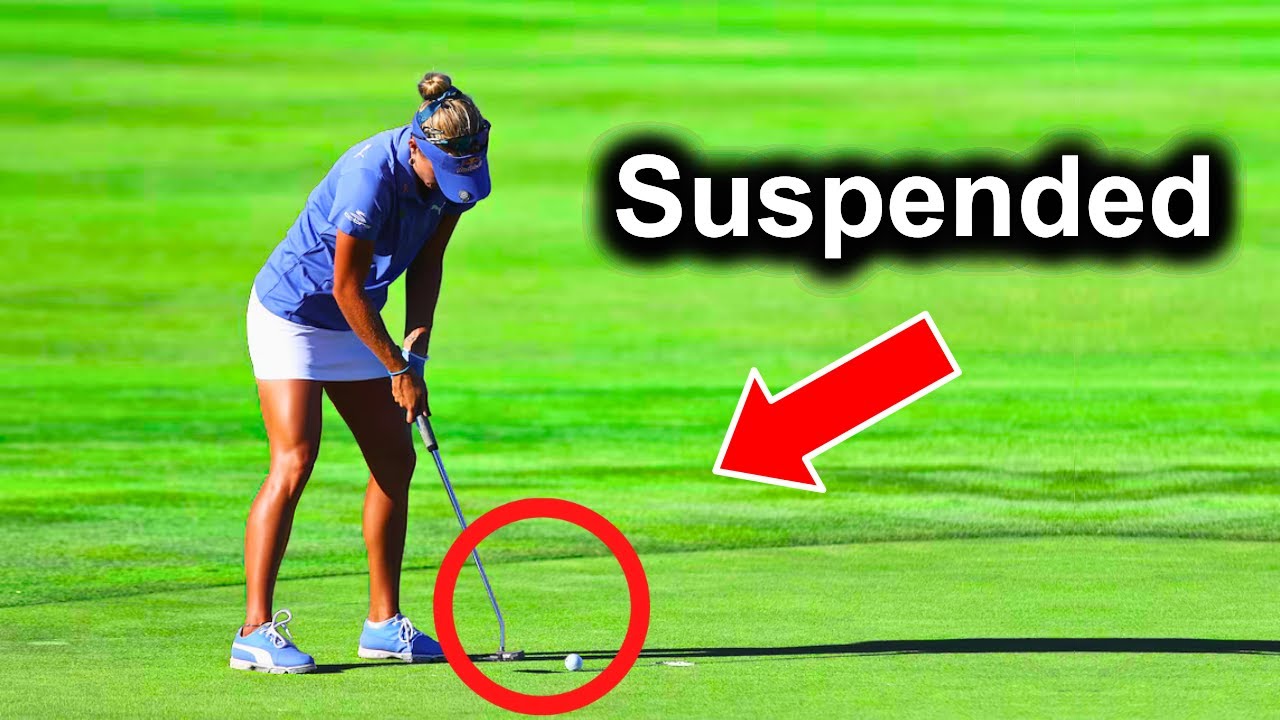
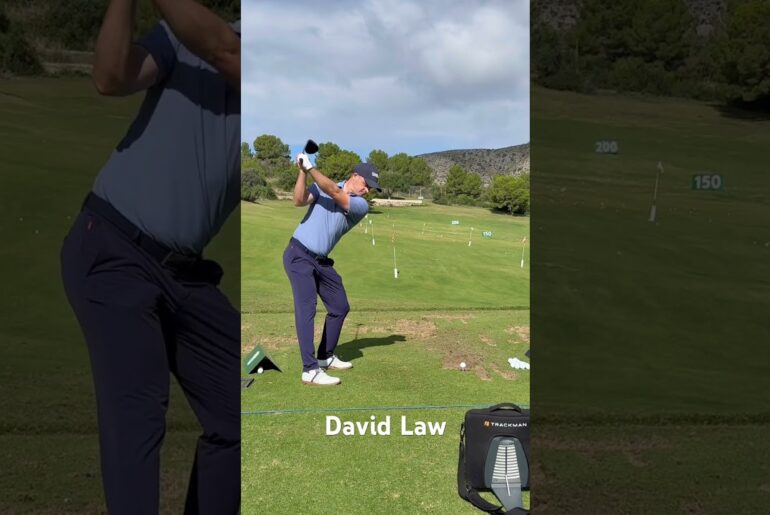

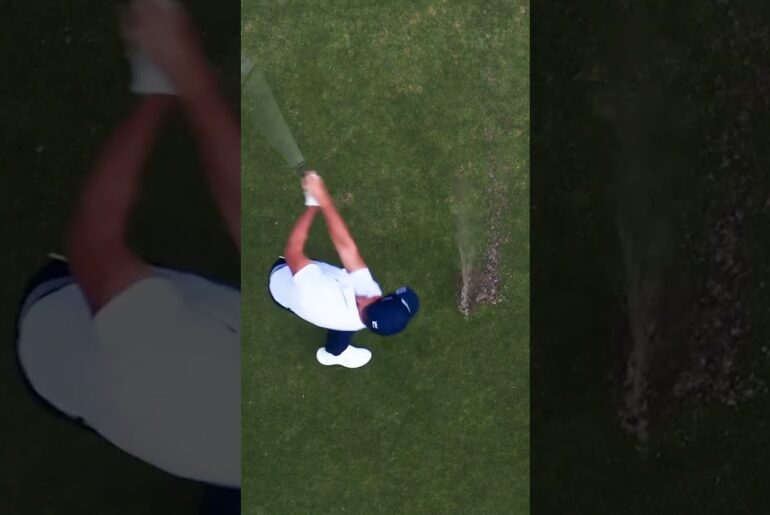
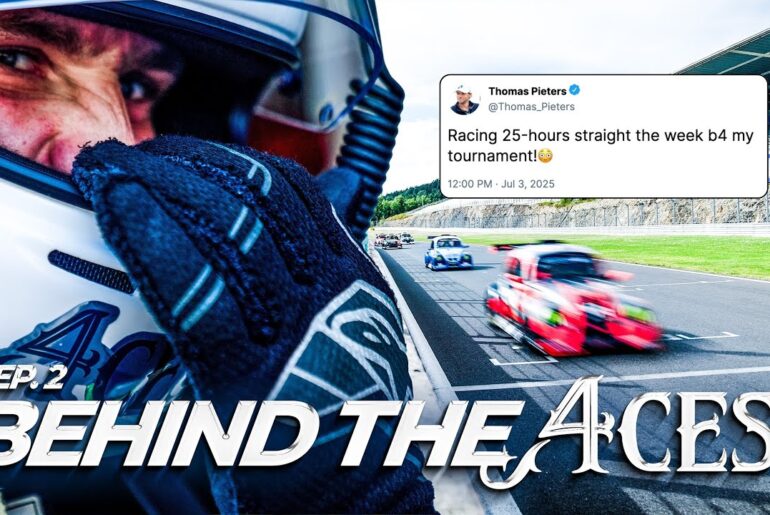
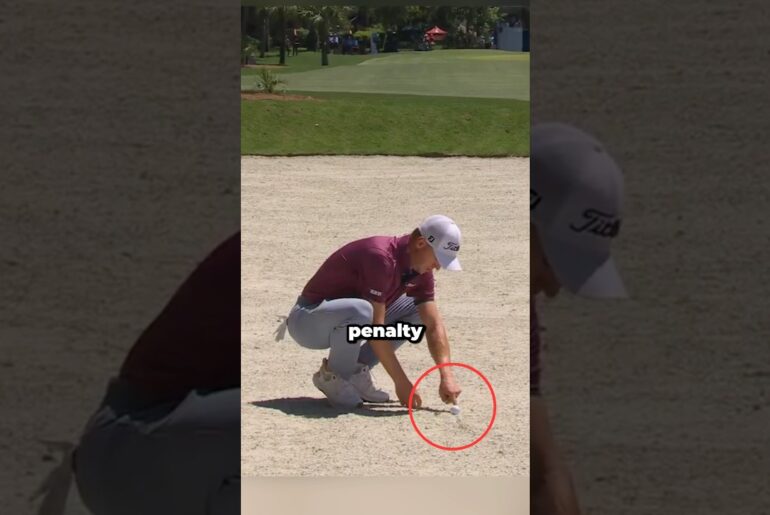
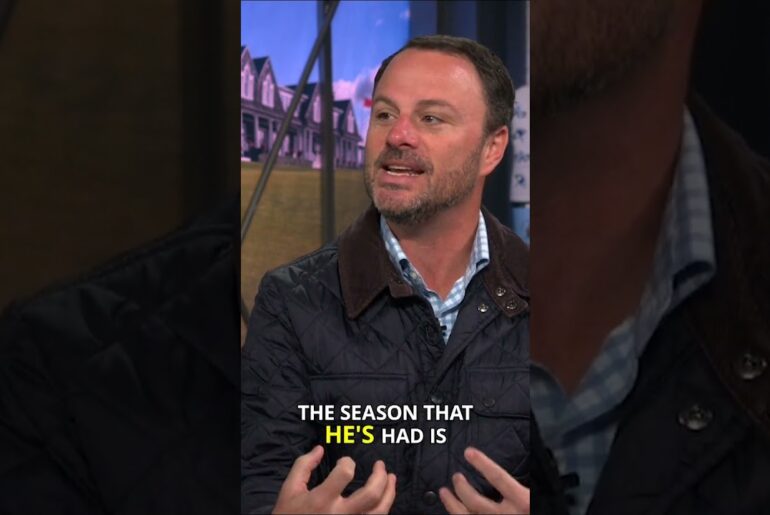
15 Comments
You forgot Mark Roe and Jesper Parnevik being DQ at the 2003 Open Championship because they failed to swap scorecards after the third round. Roe was two shots out of the lead when it happened.
Can someone explain to me what signing the score does? And why you need to be disqualified, when they have video evidence of the game being played. This seems like and out of date rule. Its not like weather he signed it or didnt actually affects the score he got. This is a clear example of why so many people dont like golf. Its slow, has dumb rules, and you have to walk instead of a golf cart which slows the game down even more.
Davidson is a man.
Men should not play in women's sport.
The problem was Michelle we did not have a tape measure with her long enough to measure the distance from the hole to where she had to drop the ball. Personally, I think that’s absolutely absurd. Be safe
Haily Davidson wasn't trying to break a barrier. He was simply a male trying to compete as a female. Regardless how this channel tries to rationalize this, it is still cheating.
The Korn Ferry 4i deal shouldn’t have happened, at least the way the narration went. The flashing was after both players had made their shots. It’s not advice then. Right?.
Men are bigger and stronger. It's an advantage, not fair to the woman
This has to be posted by an American. Rules are rules. If you don't read them before, your fault. You provide advice or accept it. Play the wrong ball and keep going. Check your ball….its that easy. Turn in a card with a lower score….cheater. Maybe just a millennial… I deserve my participation award. I will be blocking this baby. Follow the rules, these are professionals, they have been playing tournament golf for years if not decades….how hard is it?
Starting to think USGA etc. are extremely racist organisations 🤣
It's simple.
Know the rules and play within them. Especially at pro level. There's no grey area.
Ps… I would bitch slap my caddie hard regarding pulling out the range finder. Even worse that the dumbarse achieved it twice 😂😂😂😂
People have to take a pee, when you gotta go you gotta go, do these complainers not pee or they’re that rich they get someone to do it for them
Golf is the only sport that allows outside sources to report that somebody ‘broke’ a rule.
Haley Davidson should never have been playing in the LPGA HE was a MAN!!!
Sergio being a dick? Shocking!